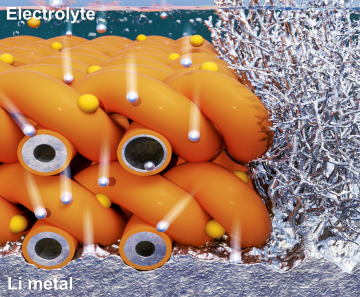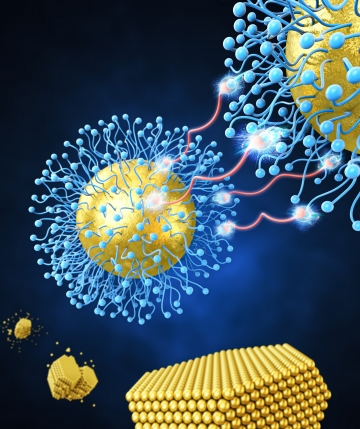KAIST
BREAKTHROUGHS
Research Webzine of the KAIST College of Engineering since 2014
Spring 2025 Vol. 24Toward future cloud computing: Accelerating cloud file systems using programmable network cards.
Toward future cloud computing: Accelerating cloud file systems using programmable network cards.
Professor Youngjin Kwon and his research team (leading student Jongyul Kim) in Computer Architecture and Systems (CASYS) Lab proposed a novel distributed file system (similar to Dropbox) that leverages SmartNIC to improve performance and availability. The proposed system outperforms state-of-the-art persistent-memory-based distributed file systems while saving CPU resources (energy and power efficient).
Article | Spring 2022
Professor Youngjin Kwon and his research team (leading student Jongyul Kim) in the Computer Architecture and Systems (CASYS) Lab published on a novel distributed file system that outperforms state-of-the-art systems while saving CPU energy of cloud servers.
Distributed file systems (e.g., Dropbox) are essential building blocks of cloud services. Recently, distributed file systems have adopted persistent memory (PM), which provides DRAM-level access latency and throughput. Using PM as a storage device, distributed file systems have revolutionized performance, exceeding that of traditional SSD-based distributed file systems by several orders of magnitude.
However, the price of this excellent performance is that PM-based distributed file systems easily become energy guzzlers, consuming more CPU and memory resources than SSD-based systems. For example, Assise, a state-of-the-art PM-based distributed file system, consumes 2.4x more CPU resources than one traditional distributed file system, Ceph. Worse yet, the massive CPU usage of PM-based distributed file systems significantly hinders the simultaneous running of other cloud applications, a phenomenon called performance interference. To save costs, cloud vendors have no other option but to run their application simultaneously.
Professor Youngjin Kwon and his research team take a new approach to address the problem by fundamentally redesigning the distributed file system. Their research outcome, LineFS, leverages SmartNIC resources to relieve host CPU burden. SmartNIC has recently been attracted by data center servers to accelerate or offload network-related functions. SmartNIC contains a separate general-purpose processor and memory that enable a network card to execute any kind of software. Gartner predicts that SmartNIC will be a disruptive technology in the cloud server market. SmartNIC is equipped with energy-saving but low-speed CPU. Therefore, it will require innovative research to offload some tasks to SmartNIC while preserving good performance.
LineFS deals with the challenges and offloads distributed file system services to SmartNIC. It distinguishes latency-critical (important for user performance) from deferrable tasks (important to cloud venders to manage data) and offloads only deferrable tasks to SmartNIC’s weak CPU. LineFS accelerates the throughput of the offloaded tasks using pipeline parallelism and hides overhead of offloaded tasks. This pipeline parallelism divides distributed file system operations into small sub-tasks and executes those sub-tasks in parallel. As a result, LineFS compliments the weak SmartNIC with parallelism, achieving even better performance than state-of-the-art PM-based distributed file systems.
Using this offloading design, LineFS effectively reduces host CPU burden and interference among co-running applications and the distributed file system. Compared with Assise, LineFS improved one co-running application, Streamcluster, by 21% and one distributed file system application, Throughput Microbenchmark, by 51% at the same time. LineFS also achieves 80% lower latency in cloud databases (called LevelDB) and 79% higher throughput in cloud file servers than state-of-the-art PM-based distributed file systems.
The paper detailing LineFS was published in 2021. It won the best paper award at SOSP 2021 (The 28th ACM Symposium on Operating Systems Principles).
Most Popular

When and why do graph neural networks become powerful?
Read more
Extending the lifespan of next-generation lithium metal batteries with water
Read more
Professor Ki-Uk Kyung’s research team develops soft shape-morphing actuator capable of rapid 3D transformations
Read more
Smart Warnings: LLM-enabled personalized driver assistance
Read more
Development of a nanoparticle supercrystal fabrication method using linker-mediated covalent bonding reactions
Read more

